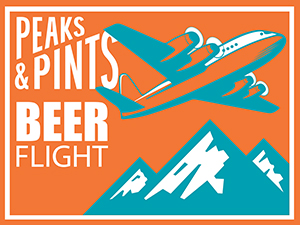 “What’s new?” is a phrase Peaks and Pints hears daily. In fact, that phrase was heard daily between 1985 and 2003, the years craft beers exploration and trying something new was a thing. In 2024, though, that means some drinkers — in their relentless quest for Untappd check-ins and tried-it-first bragging rights — have forgotten the flagship, core beers that first grabbed their attention. At one time, every brewery had one and that beer often defined the brewery. It also was the top-selling beer that subsidized a brewery’s seasonals, specialty brews, experimental beers and one offs. Because the flagship beer was made over and over, batch after batch, often for decades, it was very dependable and with the years, it might even be slowly tweaked to be better and better. Alas, today’s beer drinker, often, is always seeking something new and many breweries don’t even have a flagship beer anymore. While that has given us a never-ending wide spectrum of flavors, it has been a tough time for many of the dependably delicious beers that defined the early craft beer movement. The hashtag #FlagshipFebruary seeks to correct that. Today, Peaks & Pints will skip the pastry stouts, fruited sour beers, double dry-hopped hazy IPAs, and flavored everything, and offer a flight of flagships 20 years old or older — a flight we’re calling Peaks and Pints Beer Flight: Remember The Flagships.
“What’s new?” is a phrase Peaks and Pints hears daily. In fact, that phrase was heard daily between 1985 and 2003, the years craft beers exploration and trying something new was a thing. In 2024, though, that means some drinkers — in their relentless quest for Untappd check-ins and tried-it-first bragging rights — have forgotten the flagship, core beers that first grabbed their attention. At one time, every brewery had one and that beer often defined the brewery. It also was the top-selling beer that subsidized a brewery’s seasonals, specialty brews, experimental beers and one offs. Because the flagship beer was made over and over, batch after batch, often for decades, it was very dependable and with the years, it might even be slowly tweaked to be better and better. Alas, today’s beer drinker, often, is always seeking something new and many breweries don’t even have a flagship beer anymore. While that has given us a never-ending wide spectrum of flavors, it has been a tough time for many of the dependably delicious beers that defined the early craft beer movement. The hashtag #FlagshipFebruary seeks to correct that. Today, Peaks & Pints will skip the pastry stouts, fruited sour beers, double dry-hopped hazy IPAs, and flavored everything, and offer a flight of flagships 20 years old or older — a flight we’re calling Peaks and Pints Beer Flight: Remember The Flagships.
Peaks and Pints Beer Flight: Remember The Flagships
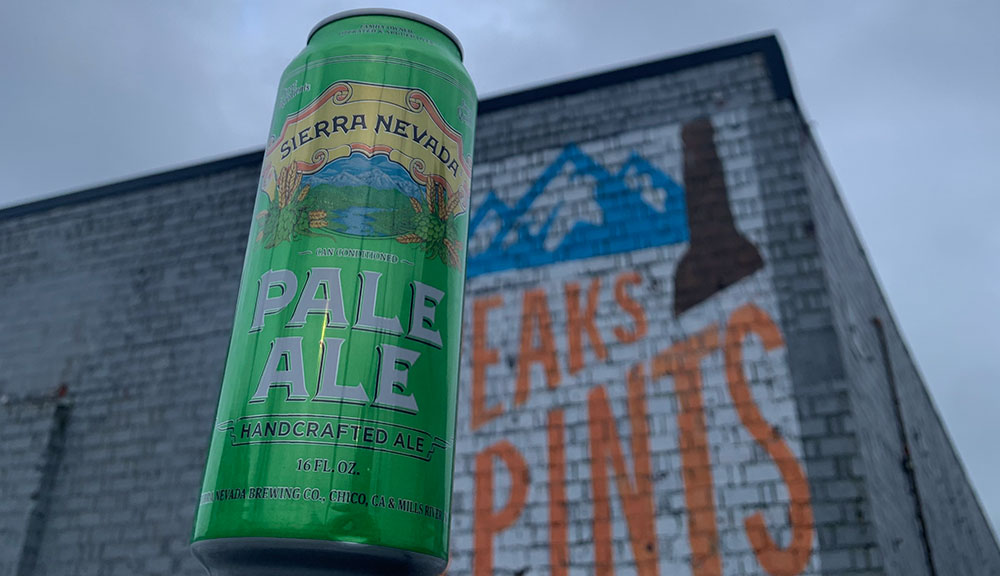 Sierra Nevada Pale Ale
Sierra Nevada Pale Ale
5.6% ABV, 38 IBU
A tip of the cap to the iconic Sierra Nevada Brewing Pale Ale that makes all the others in this flight possible. First brewed in 1980, Sierra was the craft that started appearing next to Bud and Miller handles, thus shifting the beer landscape of what people wanted to drink. It was a victory of flavor over, uh, liquid. It has a deep amber color and an exceptionally full-bodied, complex character. Magnum and Perle gives this this craft beer a clean, bitter taste. Generous quantities of premium Cascade hops give the Pale Ale its fragrant bouquet and spicy flavor.
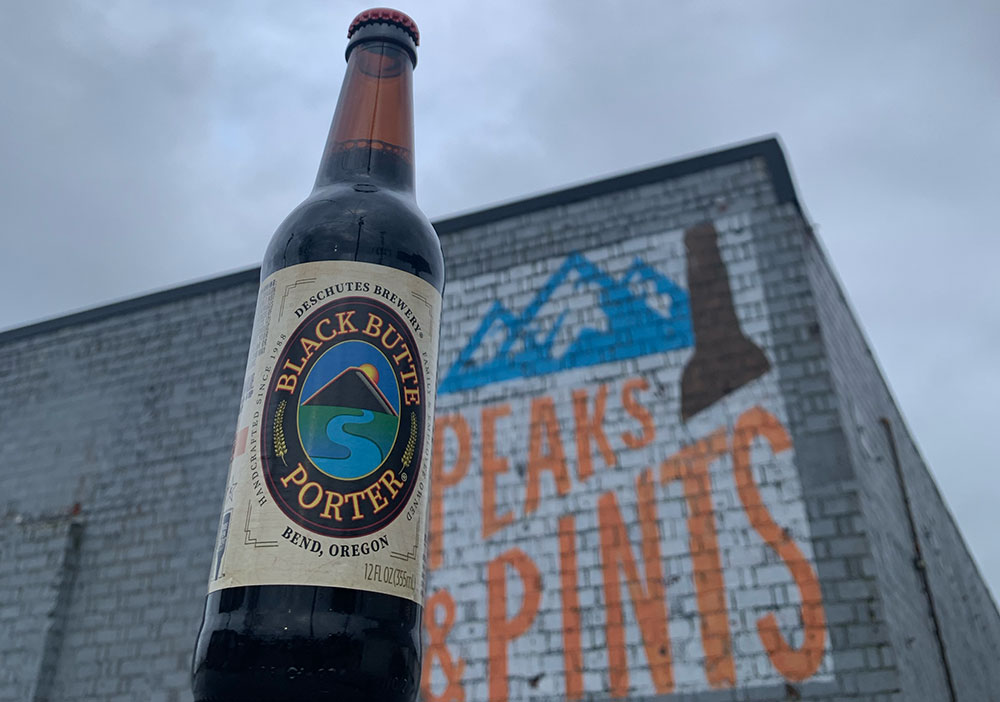 Deschutes Black Butte Porter
Deschutes Black Butte Porter
5.2% ABV, 30 IBU
In 1988, Gary Fish established his brewpub concept, Deschutes Public House, in downtown Bend. Named after the Deschutes River, Deschutes was Central Oregon’s first brewery. Fish hired John Harris (founder of Ecliptic Brewing Co.) from McMenamins to brew Black Butte Porter. Fish named his porter after a stratovolcano in the Deschutes National Forest near the brewery. The aroma bears a hint of nuttiness, followed by the unmistakable smells of rich yet soft milk chocolate. Black Butte Porter is slightly bitter in the first sip but mellows out with a chocolate and roasted finish. As creamy and chocolaty as it should be, this is the porter all other porters strive to be.
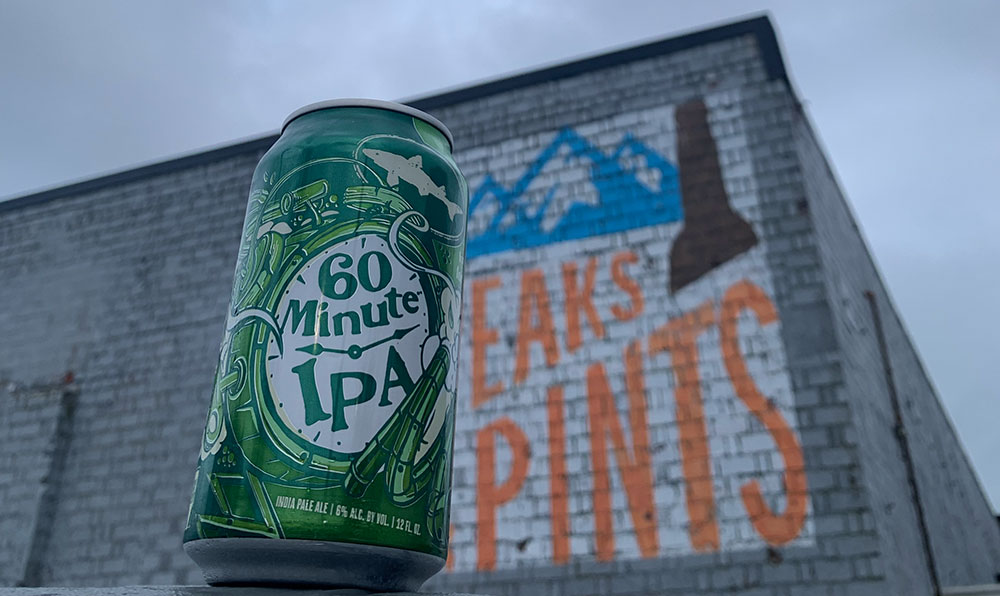 Dogfish Head 60 Minute IPA
Dogfish Head 60 Minute IPA
6% ABV, 60 IBU
Sam Calagione started making beer in 1995 when he opened Dogfish Head Brewings & Eats in the beach community of Rehoboth Beach, Delaware. Calagione is the founding father of beer in Delaware as operating a commercial brewery in the state was illegal until he convinced the local government to update the ancient Prohibition-era laws and let him open Dogfish Head Craft Brewed Ales. Within a few successful years, the company activated a major expansion, switching from making very small, homebrew-style batches to industrial-sized sessions in a sizeable brew house. Dogfish Head expanded and moved to a 100,000 square foot facility in nearby Milton, Delaware in 2002. They’re one of the largest craft brewers in America but there may be no brewery today that exhibits such a dedication to experimentation and boundary pushing. The brewery’s 60 Minute IPA, the brand’s flagship, is continuously hopped with more than 60 hop additions over the entire boil to create a powerful yet balanced East Coast blend with a ton of citrusy hop character. Inspired by a cooking segment he saw in the late ’90s where a chef added little increments of pepper over an extended period to enhance flavor, Calagione turned to a vibrating magnetic football game to create a system that would continuously add hop pellets during the entire time a beer boiled. The 60 minutes of continuous “A Northwest Hop” contributes to sweet aroma of apricot and pear — like a Riesling. The beer doesn’t taste as sweet as it smells and instead, we get notes pungent grapefruit pith with a slight bitterness.
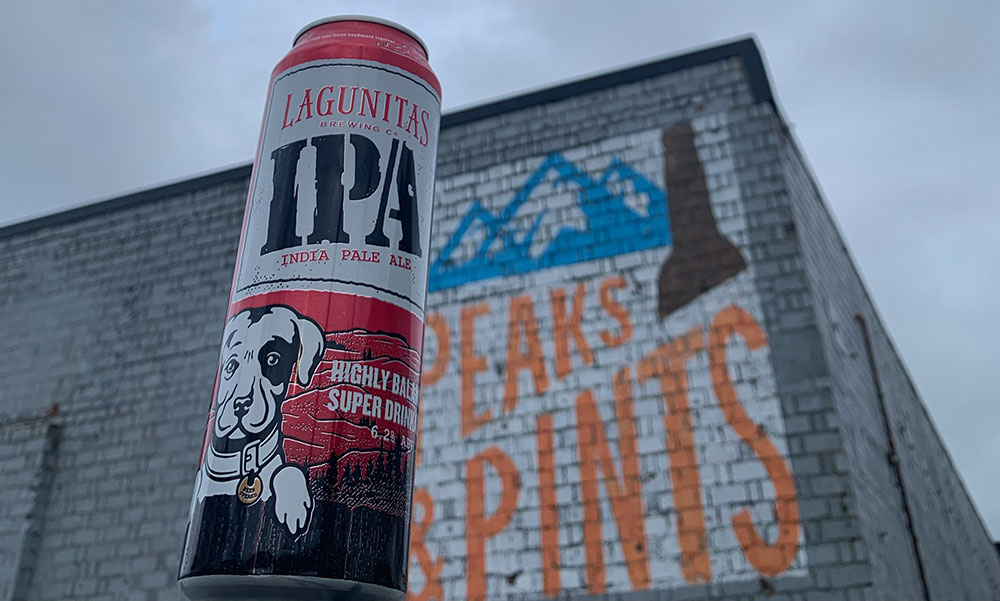 Lagunitas IPA
Lagunitas IPA
6.2% ABV, 52 IBU
The Lagunitas Brewing was the first California brewery to lead with an IPA (in name and style). Amazing, right? In an era when IPAs are de rigueur for new craft breweries, especially those on the West Coast, Lagunitas founder Tony Magee’s 1995 decision was as striking as the IPA he put out. The beer’s labels claim it’s “made with 43 different hops and 65 various malts,” which would be badass if true, if wildly impractical. Cascade and Centennial are in the greatest abundance, and they combine to deliver flavors and aromas of citrus zest, bitter pine, grass, earth and just a pinch of crystal malt to keep the hops in proportion. Finish is mostly bitter but balanced, with a slight lingering bitterness.
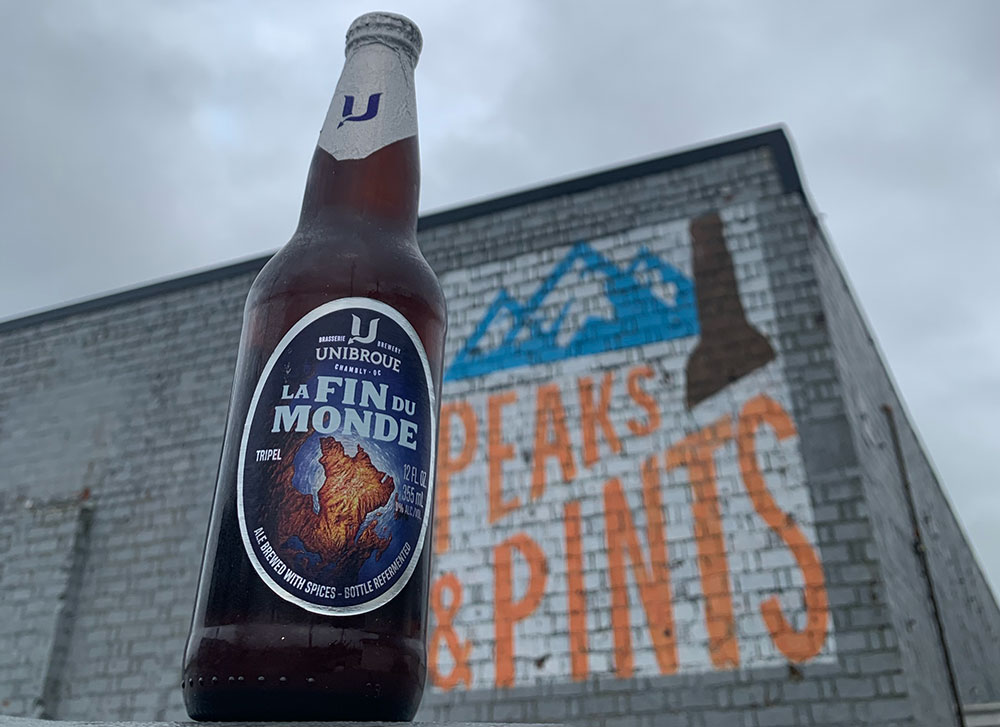 Unibroue Fin du Monde
Unibroue Fin du Monde
9% ABV, 19 IBU
La Fin du Monde has earned more medals and awards in major international competitions than any other Canadian beer. It is Unibroue‘s international flagship ale. The Belgian style tripel’s name translates as “The End of The World.” If this beer is any indication of the end of the world, bring on the apocalypse! This tripel reminds us of the beach with the golden orange color providing the sunset, the pineapple and nut aromas giving it a tropical nose, and the strong alcoholic taste, followed by sweetness, completes the sense of drinking on the beach, minus the cocktail and the mini umbrella. Even with its tropical vibes, La Fin du Monde upholds its light Belgian character. A honey sweetness is tempered by a moderate bitterness that comes in late, tongue tickling and peppery. It’s clear why this is so well loved among craft beer enthusiasts. Exotic and ethereal, it rises above the level of mere beer.
LINK: Peaks & Pints beer and cider cooler inventory
